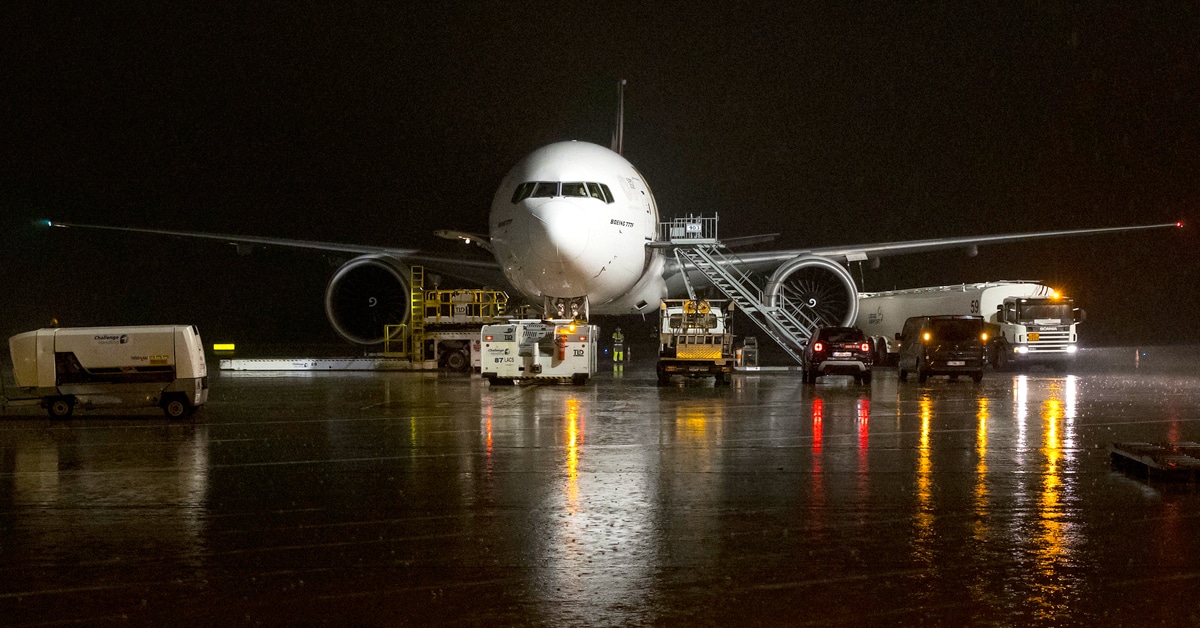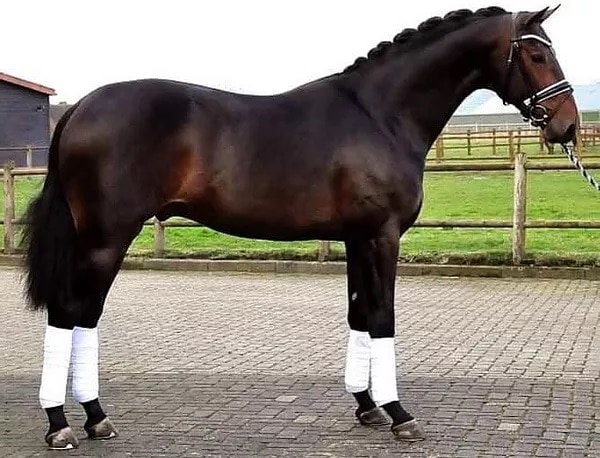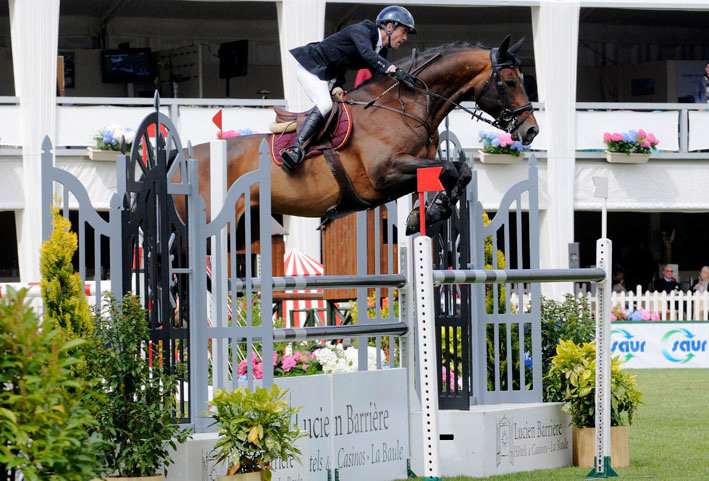If you are a sport horse breeder ‒ or plan to become one ‒ you may have played with the idea of importing a stallion from Europe. While buying a stallion from the United States is a reasonably simple and straightforward process and is no different than purchasing a mare or gelding, purchasing a stallion from Europe is more complicated, costly and time-consuming.
The entire process for stallions takes approximately 75 days, according to Christine Baker, owner of Branley Ash Sport Ponies, based at Ashland Farm in Ottawa. She has imported young horses, mares and her own German Riding Pony stallions Deja D’or and Milky Way, Dutch warmblood stallion Milo B (owned by the Milo B Group of Baker, Ashland Farm and Line Brissette) and German Riding Pony Carlchen 57 for Amelie Marsot. Baker is also importing another stallion of her own later this year.
For complete details on the process, you can wade through the Canadian Food Inspection Agency (CFIA) web page. But here’s a general overview. Horses for import must be declared free of various diseases (depending on the country they are coming from). You’ll need an import permit and export certificate. Young animals must be isolated in Europe for five or six days; it’s 10 days for breeding aged animals, says Baker. Once in Canada, youngsters and geldings must be quarantined for seven to 10 days and mares, around three weeks.
Things get more complex for stallions two years or older due to contagious equine metritis (CEM), an acute, highly contagious equine venereal disease seen primarily in Europe. Infected stallions show no symptoms, but most mares will have a copious vaginal discharge 10 to 14 days after breeding. The discharge disappears after several days, but the mares may remain infected for several months without showing any signs. Most won’t conceive while infected or if they do, may infect the foal at birth.
Stallions must be tested for CEM within 30 days before export (from swabs taken from the reproductive tract and cultured for at least seven days) and be deemed free of the disease. Once they finish their quarantine in Europe and arrive at the quarantine facility in Canada, they must be bred by live cover to two mares. They won’t be allowed to leave Europe and enter this country until the two ‘test’ mares in Canada have been quarantined, tested and declared CEM-free prior to breeding.
Pikturesque Farm owner Sarah Wilson of Perth, Ontario, imported On Ira, a Selle Francais stallion by Voltaire, from France last November. She estimates the cost, including quarantine in Europe, air transport and quarantining and testing of the stallion in Canada, was $15,000 to $18,000.
“It was my first experience with the whole import process (from Europe) and the CFIA vet’s first. It didn’t go as smoothly as it could have, but we got through it,” she says.
Wilson decided to do On Ira’s Canadian quarantine on her own farm because she has two separate barns. She bought On Ira in France in August and he arrived in the Netherlands for quarantine the end of September, but didn’t arrive in Canada until November because of the time it took for Wilson to get her stable approved as a quarantine facility. Quarantined horses must have their own barn, their manure must be separated from the other horses’ and they aren’t allowed to be turned out in the same paddocks or ever cross the paths of other horses. Wilson also had to install extra fencing around her quarantine barn in case the stallion and test mares managed to escape.
She had the two test mares tested for CEM and the test results took about 10 days. Because it was late fall, she had to start the mares on hormone treatments about 10 days prior to On Ira’s arrival to bring them into heat. After the mares were bred, they had to be swabbed three times post-mating, starting a minimum three days after the mating. There has to be at least three and no more than eight days between each set of swabs, with each swab requiring at least 10 days to culture. Blood tests must also be done on the mares between 21 and 30 days post-breeding. After breeding the test mares, the stallion had to be treated for five consecutive days with washing of his reproductive tract while in full erection and packing of an ointment effective against CEM.
“Once On Ira was here, he spent six weeks in quarantine mainly just waiting on test results,” Wilson says.
She says the process was much smoother when she imported German Riding Pony Braaklander Boomerang in January because she had her facility already approved. While On Ira had only had to penetrate the mares and not ejaculate, the rules had changed in 2021 and Boomerang had to complete the breeding on his test mares.
Baker says Canadians have more leeway where their stallions can quarantine, including at their own stables if approved. Stallions coming to the States from Europe must go to designated facilities. Ashland Farm is also set up as a quarantine facility and charges about $10,000 ‒ that includes care and handling of the stallion, vet fees associated with testing and treatment, and use of two test mares, says Baker.
Test mares are given a shot of Lutalyse post-breeding so they don’t get in foal, as typically they are being bred during the off-breeding season. Finding the right mares is also important – they must “stand like a rock” for breeding and not be afraid of the stallion, says Baker.
“We only do imports in fall and winter,” says Baker. “In spring and summer, we can’t have an active quarantine on the farm when breeding is going on.”
If you are considering setting up quarantine on your own farm, Baker cautions that there is risk to humans and horses during live cover, especially if the stallion is inexperienced or hard to manage. After being bred live cover, some stallions are not interested in using a phantom for artificial insemination, which can pose another issue.
“If you are buying a stallion but don’t plan on standing it, there’s a lot of risk, expense and work involved,” says Baker. “Bringing over a gelding is so much easier. A trainer approached us who was thinking of bringing over a stallion, having him collected and his semen frozen, then gelding him. When we explained the process and because he’d have to breed live cover, the trainer decided to have the stallion gelded in Europe before importing it.”
Turnout can be an issue as well because they can’t use areas used by other horses. “The process is long and stall rest on any horse is hard, and this is the equivalent of stall rest,” says Baker. “I usually hand-walk them.”
While Wilson’s round pen was approved for turnout, due to poor footing in the late fall and winter she had to keep her imported stallions in their stalls most of the time.
“It’s definitely time-consuming and a lot of extra work,” says Wilson. “Due to the biosecurity measures, I had to attend to all of the other horses first in their barn, then the quarantine barn horses, then go to the house and change clothes and shower before going to work,” she says. “I had a whole different wardrobe for the quarantine barn. And you have to be totally disinfected before you touch any other horses.”
But despite all of the protocols, “I’d definitely do it again,” she says.



